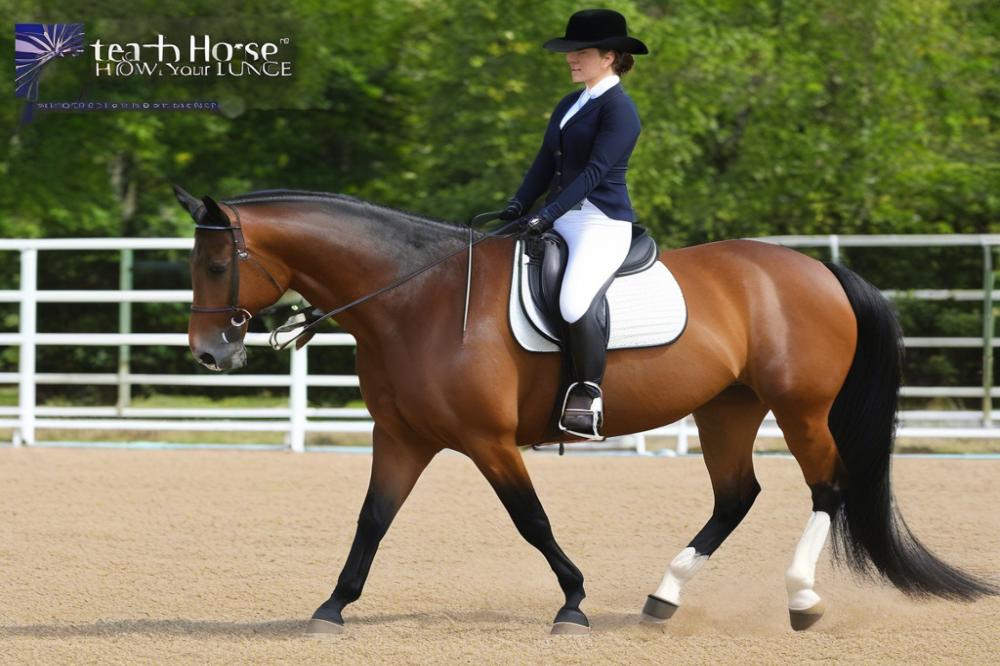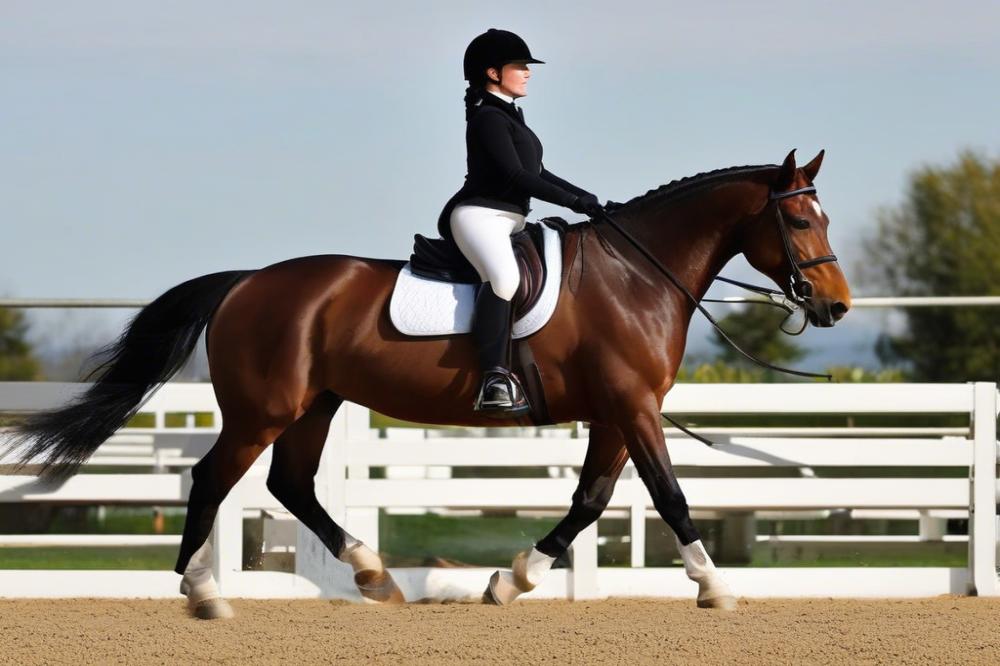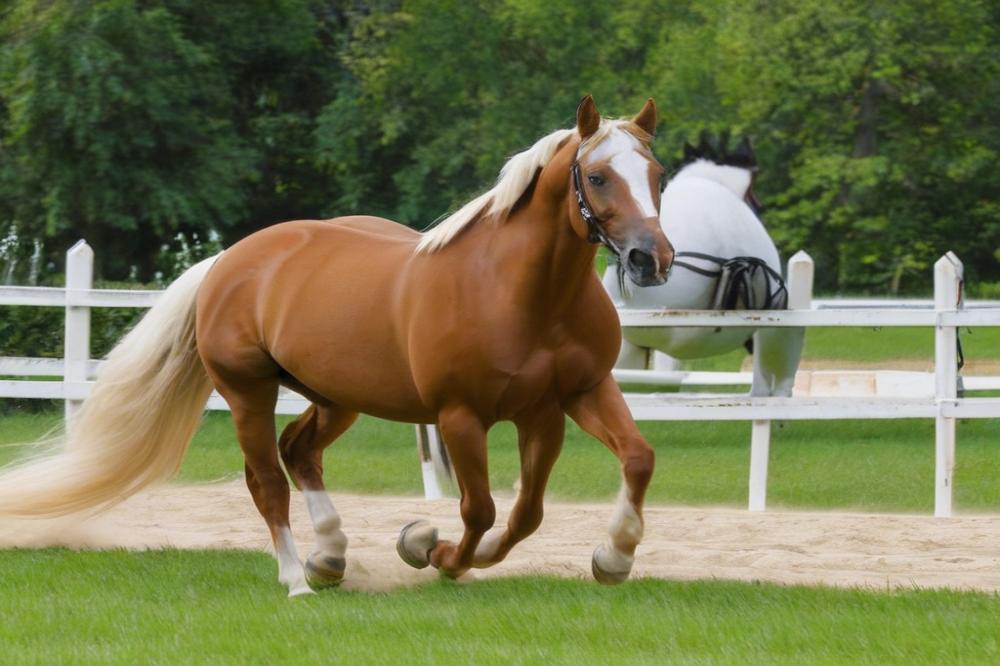Overview of Lunging in Horse Training
When it comes to horse training, lunging plays a vital role in helping both the horse and rider become stronger together. Think of lunging like a warm-up session at the gym—it gets the horse moving and ready for the real work. Whether your horse is young or wise beyond its years—like a 20-year-old in the age of horse in human years—it benefits from this core equestrian technique. Lunging not only helps build fitness but also promotes communication between horse and handler.
Importance of Lunging for Exercise and Groundwork
Imagine a horse stuck in a stall all day—what a dull life! Lunging allows them to stretch their legs and release some pent-up energy. It’s essential for them to get that exercise, much like how we all need to shake off the cobwebs after a long day sitting inside. Groundwork is another important aspect of lunging. Engaging in these activities builds trust and respect between you and your horse. When you establish clear signals, your horse learns to respond better, making your riding sessions smoother.
Benefits for Both Horse and Rider
Now, don’t just think lunging is a one-way street—it’s a mutual journey! Horses gain strength and stamina by lunging, while riders have the chance to sharpen their cues and methods. Isn’t it funny how, sometimes, we learn just as much from our horses as they do from us? Plus, there’s something quite bonding about watching your horse trot in a circle, showing off its grace and power. And let’s not forget about those stressful moments – when your horse steps awkwardly, it’s a reminder that patience goes a long way. It’s a bit like asking, “can a bear outrun a horse?” Sure, they may appear stronger at a glance, but with the right techniques, an engaged horse soon shows its true spirit.
Understanding Lunging

Definition of Lunging
Lunging involves guiding a horse in circles around you on a long line, usually called a lunge line. You stand in one spot while your horse moves away from you. Think of it as a dance where you lead and your horse follows the rhythm. This technique allows you to give commands without riding directly on the horse’s back.
Purpose of Lunging in Horse Training
The primary goal of lunging is to develop a horse’s balance and flexibility. It’s especially useful for building muscle and promoting fitness. When you lunge, you can also assess your horse’s mood and responsiveness. It prepares the horse for more intense training sessions later. Additionally, this method helps reinforce commands learned under saddle while providing a safe space for assessment.
Differences Between Lunging and Other Training Methods
Lunging differs from many other training methods in significant ways. Unlike riding, this technique focuses more on communication from the ground. You can’t ignore the fact that different tools are used, such as the lunge line and whip for encouragement. It provides a clear space for both you and the horse to engage without the added challenge of being mounted.
Moreover, lunge work helps in establishing a connection. With traditional riding, communication is often silent, but lunging demands a verbal and visual connection. Comparing lunging to groundwork, it’s more dynamic; lunging involves more movement and energy from both you and the horse.
Ultimately, mastering this equestrian technique can elevate your horse care routine. It’s a unique opportunity to bond with your horse while enhancing essential equestrian skills. So, when it comes time to teach a horse to lunge, remember that it’s not just training – it’s about building trust.
Preparing for Lunging

Assessing Your Horse’s Readiness
Before diving into lunging, check if your horse is up for it. Some horses are natural athletes and love to move. Others might need a bit more coaxing. Start with a simple observation. Is your horse calm and focused? A distracted horse can turn lunging into a rodeo. It might help to do a little groundwork first. This can build trust and improve your connection. If your horse seems anxious, maybe lunging isn’t the best choice today. Patience is key in horse training. Remember, every horse has its unique personality.
Choosing the Right Equipment
The equipment you use can make all the difference. A good lunge line is essential. Look for one that’s long enough to give your horse space but not too long to get tangled. A lunge whip can help guide your horse without pushing them too hard. Always opt for a well-fitted halter. Safety should be your top priority with horse care. If your horse doesn’t feel comfortable, things can go sideways pretty quickly. Don’t forget a helmet for yourself either! Protecting your noggin is just smart.
Importance of a Safe and Appropriate Environment
The environment plays a big part in how effective lunging can be. Choose a clean area with plenty of space. An arena is perfect. If you’re outside, watch out for distractions like barking dogs or blowing leaves. A peaceful setting helps your horse stay focused and calm. You want this to be a productive session, not a game of hide-and-seek! Lighting matters too. A well-lit area lets you see your horse’s movements clearly. Create a comfortable and unhurried atmosphere. That’ll promote trust and confidence in your equestrian skills.
The Basics of Lunging

Learning to lunge your horse takes patience and a good plan. First, let’s look at how to get started. Make sure you have a safe space—a round pen or an arena is ideal. This ensures your horse doesn’t wander off while you’re trying to focus.
Step-by-step guide to the lunging process
Start by introducing your horse to the lunge line. It’s a long rope that allows you to control your horse while giving it space to move. Clip one end to your horse’s halter. Next, stand facing your horse and hold the line tightly, but lightly. Imagine you’re holding a fishing rod—firm yet flexible.
Next, encourage your horse to move forward. Use your voice! A friendly “walk on” or “trot” can do wonders. If your horse looks at you like “What are you talking about?”, encourage it by gently waving your hands. Keep an eye on its body language; if the horse is backing up, give a little shake of the line to assert yourself. Timing is everything.
Establishing voice commands
Using clear voice commands helps your horse understand what you want. Pick a word for each pace. “Walk” for slow, “trot” for medium, and “canter” when you’re feeling bold! Practice these regularly. Your horse will start to recognize what each word means.
One tip: keep your commands upbeat. Use a cheerful voice for walking and a more excited tone for cantering. This keeps the mood light and enjoyable. Your energy can transfer to your horse. Remember, a happy horse makes a great partner in equestrian skills.
Using body language effectively
Your physical cues also play an important role. Stand tall and confident. Horses are like big mirrors; they reflect your energy. Use your arm to guide your horse’s direction. When you extend it outward, it says, “Go that way!” Something as simple as a relaxed posture can make all the difference.
Don’t forget to give praise as your horse responds. A little encouragement goes a long way. When your horse trots nicely in a circle, let it know it did well! A gentle “good boy/girl” can really boost its confidence.
As you practice these equestrian techniques, remember to have fun. Each session is an opportunity for both of you to bond and learn. Try to make it a game. After all, training should not feel like a chore.
In horse training, consistency is key. Repeat your commands and cues until they become second nature for you both. The more time you invest in lunging, the better you both will get. Who knew learning could be so rewarding?
Techniques for Teaching a Horse to Lunge
Different Styles of Lunging
Every horse is unique, so it makes sense to explore various styles of lunging. Some trainers prefer a more traditional approach, where the horse moves in a circle around them. Others might favor a freestyle technique that encourages the horse to find its balance and stride. You can adjust based on your horse’s personality and comfort level. If you have a spirited horse, try keeping them on a shorter line until they settle down. The goal is to maintain communication but give the horse enough freedom to express itself.
Use of a Lunge Line and Whip
A proper lunge line is key in this process. It can be long or short, but having at least 20 feet is ideal. This distance offers your horse space to move while staying under control. A whip can be a helpful tool too, but it should not be used to scare the horse. Think of it as an extension of your arm. A gentle tap can encourage your horse to move forward or change directions. Remember, less is often more in horse training; using a whip lightly will have the best results. Always keep a calm demeanor. Horses pick up on our emotions quickly.
Correcting Misunderstandings and Anxieties
Mistakes may happen when teaching these equestrian techniques. Horses can misinterpret signals or get anxious, especially early on in lunging. Patience is crucial. If your horse seems confused, take a breath and break it down into smaller steps. For instance, if they resist moving out, try encouraging them at a closer distance first. Use soothing words or even a sing-song voice. Each horse has its own quirks, so what works for one may not work for another.
Sometimes, a horse might become agitated. Keep your energy low and your movements smooth. Avoid sudden jerks or loud noises. Staying calm will help your equine friend feel more secure. You could even integrate some horse care routines, like brushing before lunging, to build trust. Like any good partnership, communication is essential in horse riding. A little understanding can go a long way in making lunging a positive experience for both of you.
Common Challenges in Lunging
When you start teaching a horse to lunge, various challenges can crop up. Horses might resist the idea or act like they didn’t get the memo on what lunging means. It’s important to identify these problem behaviors early. Is your horse trying to run off? Or maybe it’s just standing there like a statue. Recognizing these actions helps you adjust your approach and improve your equestrian skills.
Identifying Problem Behaviors
A horse may show reluctance in different ways. Some might start bucking or rearing, while others may simply wander off. If a horse pulls against the lunge line, they’re likely not focused. Watching their body language is vital. Are the ears pinned back? That’s a tell-tale sign they’re not happy. Keeping an eye on these cues will make a world of difference in your horse training efforts.
Strategies for Overcoming Resistance
It’s often best to take things slowly. If your horse is resistant, consider breaking the process into smaller steps. Start with familiar groundwork before lunging. Always reward good behavior with praise or treats; a simple “good boy” can work wonders! You can also change directions often. This keeps things interesting for your horse and helps them learn to pay attention. Sometimes a new environment can spark their interest, too. Try lunging them in a different area of the arena from time to time. Variety can make the training sessions feel fresh.
Maintaining Patience and Consistency
Nothing worthwhile happens overnight. Keeping a calm demeanor can help your horse relax. If you’re feeling frustrated, take a step back and breathe. Horses are sensitive creatures. They pick up on your emotions faster than you can say “giddy-up.” Consistency is key! Regular sessions will improve their response. Be prepared for setbacks; they happen to everyone. Remember to celebrate the small wins, like a single lap without a fight. Each step forward builds your confidence and your horse’s understanding of lunging. Over time, you’ll find your rhythm, and your horse will too!
Advancing Lunging Skills
Progressing to More Complex Exercises
Starting out, lunging may seem simple, but it opens doors to more intricate movements. Once your horse is comfortable going in straight lines, it’s time to add a little flavor. Think of it like a dance—first, you must have the basics down before you can twirl and spin! Introduce circles of varying sizes. Try smaller circles to get your horse bending correctly. Larger ones can help strengthen their balance and stamina.
Plan to include a variety of gaits too. Walk, trot, and canter should all make an appearance in your sessions. Each gait helps your horse build different muscles, similar to how humans train for marathons versus sprints. Keep a watchful eye on your horse’s rhythm and mood. They might surprise you with their natural grace!
Incorporating Transitions and Changes in Direction
Once you’ve established those basic lunging skills, you can introduce transitions. Changing speeds and gaits within a session keeps your horse alert and engaged. For example, asking them to move from a walk to a trot then back to a walk tests their responsiveness. Be sure to praise them for any effort. Positive reinforcement works wonders!
Another exciting addition is direction changes. Sending your horse from one side to the other teaches them to listen and respond. Start with simple changes, like switching from left to right. With practice, your horse will master this like a pro. This step is crucial in horse riding, as it develops awareness and flexibility.
Using Lunging for Specific Training Goals
Lunging can serve different purposes in your training plan. If you want your horse to build stamina, choose longer sessions with fewer breaks. On the other hand, if you’re focusing on developing muscles or improving balance, shorter sessions at higher speeds will do the trick.
Some riders even use lunging to work on specific equestrian skills, like jumping or dressage movements. You can mimic jump patterns or basic dressage tasks. Incorporating obstacles can add excitement and keep your horse engaged. Just be sure to take it slow initially to prevent any confusion or mishaps.
Always remain aware of your horse’s energy levels. A tired horse won’t cooperate well, and that defeats the whole purpose. Mix it up, and enjoy the journey together. After all, every step forward in horse training is a step toward a deeper bond.
Wrapping It Up
Throughout this article, we’ve explored the essentials of teaching a horse to lunge. It’s clear that patience, consistency, and a positive attitude can make a world of difference. Remember, every horse is unique, and understanding their personality will guide you in forming a successful bond. You want to be the serene captain of your ship, guiding your horse while also enjoying the journey together.
Practice truly does make perfect, so don’t shy away from incorporating lunging into your routine. Whether it’s five minutes a day or a longer session, regular practice can transform not just your horse’s skills but also your relationship with them. One of the best parts about lunging is that it’s a two-way street; the more you work together, the stronger that connection becomes. Like any relationship, it requires time and effort to build trust and understanding.
Think of lunging as a dance between you and your horse. As you both learn the steps, mistakes can sometimes lead to the funniest moments. Ever seen a horse suddenly start playing with the lunge line? Add a little humor to those unexpected moments, and you might just find that both you and your four-legged friend enjoy each training session. After all, who wouldn’t want to enhance their horse life logo with a bit of laughter?
Lastly, it’s important to remember that lunging isn’t just a training technique; it’s a way to deepen your bond with your equine partner. From the spirited English horse breed to the gentle giant in your backyard, every horse teaches us something. So, step out into the arena with confidence and an open heart. Trust the process and celebrate each milestone, no matter how small. Happy lunging!



